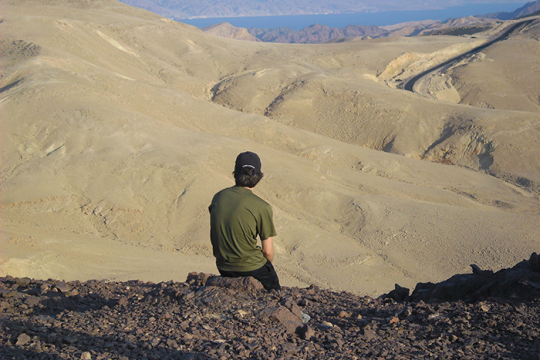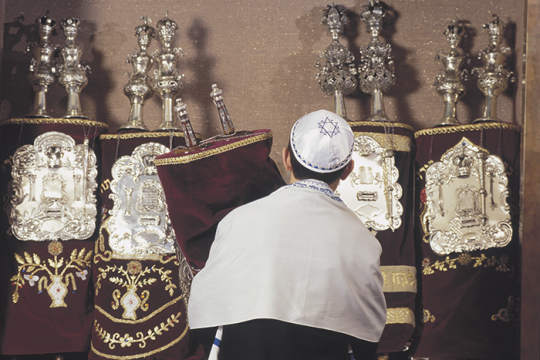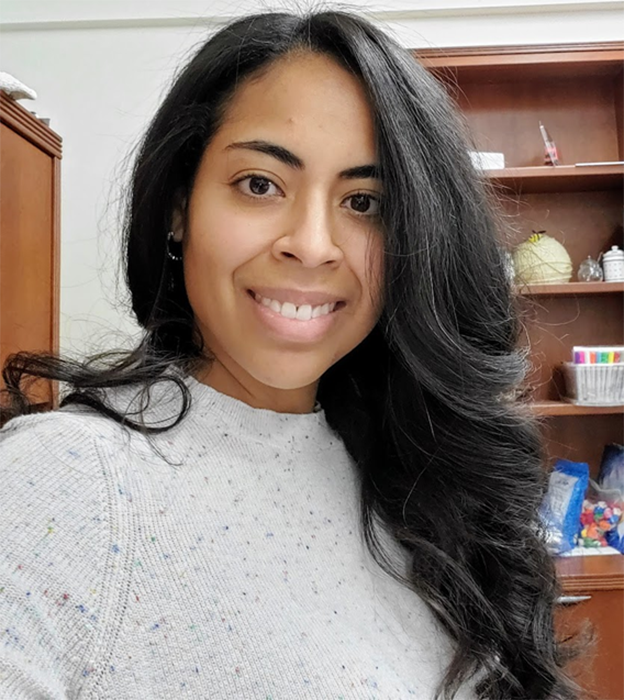
As I stood at the top of the steps of the pool of warm water, I could feel my feet tingle with anticipation. The feeling slowly enveloped my body, moving steadily up my legs, to my core, my heart and my mind. The feeling did not agitate or annoy, it was like a blanket of calmness and serenity. I stood at the top of the steps looking down into the . I took a breath and descended slowly until I stood fully in the water.
A short time later, I came out of the mikvah, step by step once more, to meet the new version of myself. I felt so elated in that moment. The after my immersion, I was welcomed with open arms by a community that had already embraced me before I officially converted. I stood in front of that same congregation with my heart full of love and immense gratitude. I was officially and forevermore a Jew.
When we welcome a new baby into this world, we shower the parents with gifts, offer words of wisdom, and create a community of support. The same should hold true as a new Jew-by-choice emerges from the mikvah. In the days and weeks after my immersion, I realized something was missing - I craved guidance and support as I emerged into my new Jewish self.
That process set me on a journey toward deep engagement in synagogue life, taking on various roles as a lay member of the community, and eventually sitting on the synagogue board. Professionally, my journey led me to become a Jewish educator, where I help guide and support others exploring their Jewish identities. Nevertheless, the journey was not easy. I often felt alone in trying to figure out my own path. As I look back, I wish there were things I knew then so I could be better prepared for my journey ahead.
There are great complexities to being Jewish that can be even greater challenges for those who choose to become Jewish. Jews-by-choice often do not know about the challenges of life after conversion that come along with the joy. I am a non-white Hispanic woman. I did not expect to be challenged by racism from within the Jewish community and antisemitism from without. I was not prepared for the racial microaggressions that I experienced within Jewish spaces.
During my conversion, only one rabbi spoke with me about living as a Jew of Color in a predominantly white Jewish community. He asked a question that has stuck with me ever since: "Have you considered what it will be like to be a minority within a minority?" I had never thought about that before that moment. Conversion is about more than just learning Jewish facts; it is about seeing oneself as part of a larger community. Questions like this about my identity were immensely helpful on my journey.
I also would have benefitted from conversations about who owns my story and how to set boundaries. Questions such as "Where did your mother go to synagogue?", "You look Israeli, are you from there?", or "Did you convert because of your husband?" are not okay. What might seem to be a benign game of Jewish geography often felt intrusive, as though others were skeptical of my validity as a Jew and wanted me to reveal my conversion. It is my choice to decide whether to share my story.
Jewish law teaches that we are not permitted to ask whether someone is a Jew-by-choice; Jews who were born to Jewish parents and Jews who chose Judaism have equal status. After all, our people's story begins with Abraham, himself a Jew-by-choice.
Much like our biblical patriarch Abraham, many Jews-by-choice today experience a sense of cultural and familial loss. Abraham had to leave his household, reject his father's idol worship, and journey to an unknown land. He must have been scared, anxious, and nervous as he left his home and journeyed to Canaan. Nevertheless, he did so because of his faith in God.
Modern Jews-by-choice have similar feelings and experiences. Jewish holidays can be especially difficult. It's not just about not celebrating Christmas, it's about losing family traditions and, sometimes, lack of family understanding. Jews-by-choice might heavily depend on their new adoptive Jewish families in order to celebrate the holidays. For me, Passover comes to mind because it's a holiday celebrated primarily in the home. I've seen times when a single 20-something receives an invitation, but someone in their 60s is assumed to have family and not need community support. However, it is quite possible that neither has a Jewish family and both would welcome an invitation for the holiday.
In my family, I rely on my in-laws' engagement with Jewish holidays. It is often assumed that I don't need Jewish support or guidance because I have my husband's family. However, almost all my observations and traditions have come from the internet and books. I don't have a recipe from my bubbe's (grandmother's) cookbook for , or matzah ball soup. As a Hispanic Jew-by-choice, I have integrated some Sephardic traditions and recipes into my family's Jewish life, from rice and Sephardic charoset balls on Passover to buñuelos (a light-as-air fried dough dessert is popular in Mexico, Cuba, and Colombia) on . Shabbat is the time that I am most comfortable because I have had rabbis invite me into their homes to have a hands-on Jewish experience. Ultimately, having hands-on experiences, being free from judgment or prying questions and being treated like any other Jew are what benefit Jews-by-choice the most.
Looking for an affirming space to process your Jewish journey with others who have recently converted to Judaism? Yanira is one of our facilitators for Jewish & Newish: A Supportive Online Space for Those Who Have Recently Converted to Judaism. Share experiences, ask questions, and find supportive community.
Curious about exploring Judaism? See our listings of Introduction to Judaism classes in local communities and online.
Related Posts

Funny, You Don’t Look...

Spicing up my Hispanic Heritage and Embracing Sephardic Traditions


